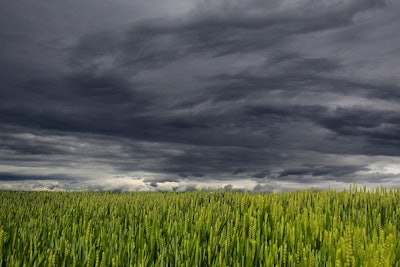
The U.S. Drought Monitor, a collaborative effort between the National Drought Mitigation Center at the University of Nebraska-Lincoln, the United States Department of Agriculture, and the National Oceanic and Atmospheric Administration, has released its latest drought summary. This report covers the period ending July 16, 2024, and highlights notable weather events and drought conditions across the country.
The remnants of Beryl brought substantial rainfall to the Midwest, from east Texas to Michigan, significantly wetting the region. Additional heavy rain at the end of the period maintained these wet conditions. The eastern seaboard from New Jersey to the Carolinas also received considerable precipitation, though it was mostly confined to coastal areas. The rest of the country experienced dry conditions with only sporadic light rainfall.
Northeast
The Northeast faced warmer-than-normal temperatures this week, with the warmest areas from eastern New York to Maine, where some locations experienced departures of 8-10 degrees above normal. Above-normal precipitation was recorded in northern parts of the region, including New York and Maine, while southern New Jersey to eastern Virginia also saw more than 200% of normal precipitation. However, most other areas were drier than normal, leading to expanded drought conditions. Abnormally dry conditions grew in southern New Hampshire and central Pennsylvania, with moderate and severe drought expanding in Pennsylvania, West Virginia, and Virginia. Severe drought was also introduced in West Virginia and northern Virginia, though coastal areas saw some improvement.
Southeast
Spotty summer showers affected Florida, Georgia, and Alabama, while more widespread rain occurred along the North Carolina coast down to South Carolina and Georgia. Temperatures were generally above normal, particularly in northern Florida, southern Georgia, and South Carolina. Coastal rains led to some improvements in drought conditions in the Carolinas and central Florida. However, northern Alabama, Mississippi, and Tennessee saw significant drought degradation, with new pockets of extreme drought in southern Tennessee, northern Alabama, western Alabama, eastern Mississippi, and northern North Carolina.
South
The South experienced a mostly dry week with temperatures 2-3 degrees below normal. Short-term dryness led to expanded abnormally dry conditions in north Texas and southern Oklahoma. No significant changes were reported for the rest of the region.
Midwest
The Midwest had mixed temperatures, ranging from near normal to slightly below normal, with 2-4 degrees above normal in the northern and eastern parts. Significant rainfall in southern Wisconsin, Illinois, and Indiana led to improvements in drought conditions, with abnormally dry conditions removed from Iowa and northeast Missouri. Illinois and Indiana saw a full-category improvement, leaving behind only a few pockets of abnormally dry conditions. However, dryness in southern and southeast Ohio and eastern Kentucky led to some degradation.
High Plains
Above-normal precipitation was recorded in northwest South Dakota, north central North Dakota, and eastern Kansas. The rest of the region remained dry, leading to expanded abnormally dry conditions in northwest and southeast Kansas, eastern Colorado, and western Nebraska. Moderate drought was introduced in eastern Colorado and expanded in northwest Nebraska, southwest South Dakota, and eastern Wyoming. Moderate and severe drought expanded in central Colorado and western Wyoming, with severe drought spreading in western Montana and a new pocket of extreme drought introduced.
West
The West saw warmer-than-normal temperatures, especially in central Washington, Oregon, and northern California. Isolated rains occurred in New Mexico, Arizona, and central California. In response to recent heat and dryness, abnormally dry conditions expanded from northern Nevada and southern Idaho to northern Utah. Moderate drought also expanded in central Oregon and western Wyoming, with severe drought spreading in western Montana and a new pocket of extreme drought introduced.
Caribbean
The U.S. Virgin Islands maintained their drought-free status, with sufficient rainfall and stable well data. No changes were made in Puerto Rico this week.
Pacific
Abnormally dry conditions improved in portions of southern Alaska and expanded in eastern Alaska. Moderate drought expanded on the Big Island of Hawaii. American Samoa and the Republic of Palau remained drought-free, with sufficient rainfall recorded.
Looking ahead
The next 5-7 days are expected to see significant precipitation in New Mexico, southern Colorado, northeast Texas, and from Louisiana to Virginia. Dry conditions are anticipated in the West and Midwest. Cooler-than-normal temperatures are forecast for the Plains, South, and Southeast, with warmer-than-normal temperatures in the West and near-normal temperatures elsewhere. The 6-10 day outlooks suggest below-normal temperatures for the southern Plains, South, Southwest, and southern Midwest, with above-normal temperatures in the West, Florida peninsula, and Northeast. Texas and the area from the Southwest to the Mid-Atlantic are likely to experience above-normal precipitation, while the northern Rocky Mountains and northern High Plains may see below-normal precipitation.

















